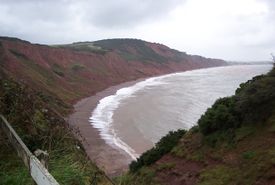Difference between revisions of "Template:This weeks featured article"
| Line 1: | Line 1: | ||
'''Gravel Beaches''' | '''Gravel Beaches''' | ||
| − | [[Image:Sediment supply from soft cliffs.jpg|thumb|right| | + | [[Image:Sediment supply from soft cliffs.jpg|thumb|right|275px|Sediment supply from soft cliffs <br> © A. J. Chadwick]] |
Gravel beaches are widespread around the world, including the USA, Canada, Japan, Argentina, New Zealand and the wave dominated coastlines of Northern Europe. In the UK, about one third of the coastline is protected by such beaches. | Gravel beaches are widespread around the world, including the USA, Canada, Japan, Argentina, New Zealand and the wave dominated coastlines of Northern Europe. In the UK, about one third of the coastline is protected by such beaches. | ||
Revision as of 14:58, 29 August 2012
Gravel Beaches
Gravel beaches are widespread around the world, including the USA, Canada, Japan, Argentina, New Zealand and the wave dominated coastlines of Northern Europe. In the UK, about one third of the coastline is protected by such beaches.
In coastal defence schemes, considerable use is made of coarse-grained (gravel) sediment to replenish eroding beaches, often in conjunction with structures such as rock or wooden groynes or offshore breakwaters. This is because such beaches are known to be an efficient form of natural coastal defence. Two examples from the UK are those at Sidmouth, Devon and Elmer, West Sussex.
The emphasis of the article is to present in a clear and concise manner the most relevant concepts, basic understanding and insights into the behaviour of gravel beaches, to provide a summary of the available engineering analysis techniques and modelling approaches and to provide guidance to further reading and a list of the most relevant references to work carried out since 1990...

